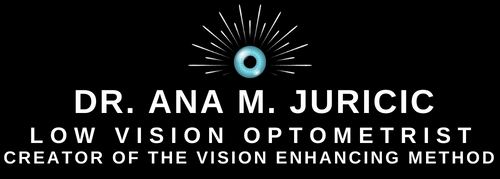Low vision affects individuals of all ages and backgrounds, presenting unique challenges that require understanding and empathy. This month, we stand together to illuminate the importance of awareness, education, and support for those navigating life with low vision.
This Month we will embark on a journey to explore some of the most common low vision conditions. We invite you to stay engaged as we continue to explore various low vision conditions throughout this month.
Our focus today is on Macular Degeneration and Stargardt's Disease, both of which impact central vision but manifest at different stages of life. Through understanding these conditions, we aim to provide insights and support to those affected and their loved ones.
Macular Degeneration: Understanding the Challenge
Macular degeneration is a leading cause of vision loss, particularly among older adults. It affects the macula, the central portion of the retina responsible for sharp, central vision. As the disease progresses, individuals may experience blurriness or dark spots in their central vision, making tasks like reading or recognizing faces challenging.
To mitigate its progression, lifestyle adjustments such as quitting smoking, adopting a diet rich in antioxidants and omega-3 fatty acids, and regular exercise can significantly reduce the risk. Moreover, wearing UV-protective sunglasses and undergoing routine eye exams for early detection and management are pivotal steps in preserving vision and managing this condition effectively.

Stargardt's Disease: A Different Perspective
In contrast, Stargardt's disease is a form of macular degeneration that typically manifests in childhood or adolescence. This genetic condition affects the macula, causing a gradual loss of central vision. While the age of onset may differ from macular degeneration, Stargardt's shares similarities in its impact on central vision and the challenges it presents in daily life.
Additionally, protective measures such as UV-blocking eyewear and regular eye examinations play crucial roles in slowing down its progression. Leveraging low vision aids and adaptive technologies can empower individuals to optimize their remaining vision, promoting independence and quality of life despite the challenges posed by Stargardt's Disease.
Navigating Life with Central Vision Impairment
Whether it's macular degeneration or Stargardt's disease, living with central vision impairment can be daunting.However, it's essential to remember that there is hope and support available. From low vision aids and assistive technologies to rehabilitation services and community resources, there are pathways to enhance independence and quality of life.
Through awareness, education, and proactive measures, we strive to empower our community to navigate these conditions with resilience and hope.

Join Us In Raising Awareness
This Low Vision Awareness Month, we invite you to join us in shining a light on Macular Degeneration, Stargardt's disease, and all forms of low vision. Spread the word, and share your stories, if you have a loved one or somebody who needs to read this or get more information about it share this email with them and advocate for greater understanding within our community. Together, we can make a meaningful difference in the lives of those affected by low vision.

If you'd like to access more valuable information on how to navigate your low vision condition, Dr. Ana has created a The Vision Enhancing Method Solutions Kit customized just for you. This comprehensive resource offers personalized tips, strategies, and tools to help optimize your vision and enhance your quality of life.

If you haven't had the chance to discover The Vision Enhancing Method Starter Kit and learn more about it now is the perfect time.


